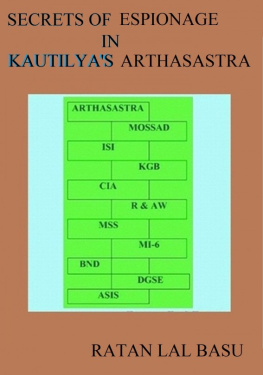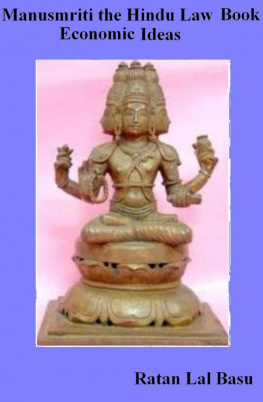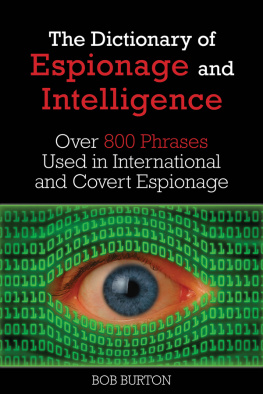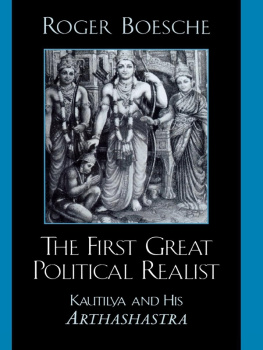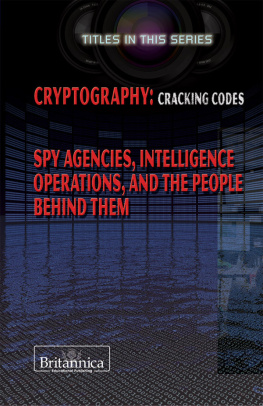Secretsof Espionage in Kautilyas Arthasastra
By
Ratan Lal Basu
Copyright 2016 Ratan LalBasu
Smashwords Edition
Smashwords Edition, LicenseNotes
Thank you for purchasing this e-book.It is the copyrighted property of the author, and may not bereproduced, copied and distributed for commercial or non-commercial purposes. If you have enjoyed this book, pleaseencourage your friends to purchase the e-book at Smashwords.com,where they can also discover other works by this author. Thank youfor your support
Contents
Espionage has been an inexorable partof statecraft ever since the emergence of state as the supremeinstitution of governance of human societies. The term espionage,in general, applies to both internal intelligence of a state andintelligence pertaining to other countries. The ruler or rulinginstitutions of the state have to be well informed of the internalsituation of a country, its citizens, the internal rival groups orindividuals, the dissidents, the supporters of the rulinginstitution or ruler, the groups or individuals striving todestabilize the state machinery or cliquing against the government;the various conflicting groups and the inner struggle among them,the designs and movements of criminals of various categories,problems and aspirations of the people belonging to various socialcategories and professions etc. The quality and efficiency ofgovernance of a state unquestionably depends on the quantity andquality of intelligence on the above mentioned aspects. In fact,without a competent internal espionage network, it is well neighimpossible for the government of a country to ruleproperly.
Quality of governance depends a gooddeal on the quality of internal intelligence. On the other hand thestate ought to be well aware of the other countries -- friendly,neutral and enemy countries interstate rivalry or coalition, theattitude of them towards the country concerning, their war efforts,and weaponry, internal situation of the countries and theircitizens, their economic conditions etc. All these pertain toexternal intelligence which has two aspects, viz. espionageactivities about other countries that include both gatheringintelligence about them and destabilizing them in case of the enemycountries and to protect the country from espionage onslaughts ofother countries.
Two most important external activitiesof a state, ever since its emergence, have been to protect itselffrom foreign invasion and imperialistic invasion of foreigncountries and espionage plays a crucial role in facilitatingsuccessful external defense and territorial expansion bycaptivating other countries. No war, either a defensive or anoffensive, could be waged successfully without high qualityexternal intelligence. The intentions of the states have remainedalmost unchanged even today notwithstanding the global effortstowards avoiding war and conflicts and emergence of world bodieslike the UNO, the World Bank, and the WTO etc. Imperialism haschanged forms in course of time from open to clandestine, indirecteconomic imperialism instead of direct territorial occupation, andin many cases hot war has changed into cold war without direct useof destructive weapons. So, importance of external intelligence hasremained the same in statecraft in modern days.
With the progress of theoriespertaining to state and material progress, complexities ofinter-state relations have increased in course of time andaccordingly, external espionage have become more complex andsophisticated. Keeping pace with the evolution of communicationtechnologies, especially cyber technology, espionage techniqueshave become more and more subtle and complicated and opportunitiesto utilize modern technologies have added new dimensions to modernespionage and counter espionage theories. Spectacular developmentof arms and ammunitions technologies and destructive power ofweaponry have enhanced the importance of military intelligence andcounter intelligence of each country. Now-a-days, an importantaspect of external intelligence pertains to weaponry and warefforts of other countries. With spectacular advance of productivetechnologies and technological gap among technologically advancedand backward countries, industrial and economic espionage hasemerged as a novel aspect of modern external espionage. Thispertains to both purely economic and war related technologies.Cyber technology has added new dimensions to modern espionage andcyber espionage (through Hacking, Phishing, Trojan horse and othersimilar devices) is something completely new in the arena ofespionage.
In a series of booklets, I have alreadygiven a brief account of the major powerful espionage agencies thatemerged or have become active since the Second World War and arechiefly engaged in external espionage. This booklet endeavours tohighlight the essential aspects of espionage mechanism (bothexternal and internal) as envisaged by the great Indian PoliticalTheoretician, Kautilya (also known as Chanakya and Vishnugupta)around 300 B. C. As a matter of fact, his work may be considered aspioneer in the arena of scientific espionage.
The science of espionage has a longhistory of evolution and probably it originated ever since theemergence of state as the supreme form of governance in clansocieties. The science, in course of emergence of larger statesachieved high level of development in Egypt, Syria, Persia, China,Greece and India. By the 4th century B. C. the science of espionagein India achieved a spectacular level of advancement which wasincorporated in the great ancient Indian text, the Arthsastra ofKautilya composed around 300 B. C. The basic theories of espionageas prescribed by Kautilya have changed very little in course of thelast two millennia and three hundred years notwithstanding thewidespread use of technological devices developed in course ofindustrial advance, especially, the cyber technology developed incourse of the last few decades. As regards effectiveness ofespionage methods, the modern espionage agencies are yet to learn alot from the theories and practice of espionage as prescribed inthe Arthasastra.
Arthasastra espionage mechanism wouldbe discussed in detail in Part II of this book. The rest of thechapters of Part I are:
Chapter 2: Modern EspionageDisciplines
Chapter 3: Modern EspionageAgencies
Modern espionage disciplines have beenclassified into various categories. However, in many cases thecategories overlap and it may be difficult to strictly define aspecific category. The major categories mentioned in modernespionage terminology are the following.
i) Humint
The age old method of intelligencecollection, Humint, i.e. human intelligence is still one of themost important sources of intelligence data. The method consists ofappointment of spies under various guises and installing molesinside intelligence and counter-intelligence agencies, governmentinstitutions, military and police forces and corporateestablishments of foreign countries. Human intelligence alsoincludes intelligence about the citizens of the countryconcerned.
The subsets of Humint in this arena areApplied Psychology and Social Network Analysis.
Interrogation of prisoners of war,captured foreign citizens, suspected foreign spies arrested aresome other sources of Human intelligence. People disclose hiddenfacts while under intoxication or infatuation. So use of alcoholicdrinks, narcotic drugs, enticing social females and prostitutes,has been an age old practice in Humint collection.
Applied psychology pertaining toindividuals, castes, creeds, religious groups, terrorist,ideological groups and national characteristics etc. are alsointegral parts of Humint collection. With the advent of technologyHumint collection has been assisted by tape recorders,micro-cameras, infra-red cameras, smart phones, and computers.Special purpose computer software and internet have added newdimensions to modern Humint collection.
Next page
